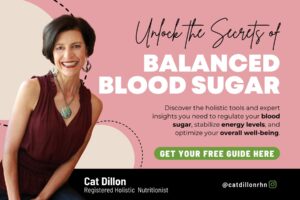Do you know about food synergy?
It’s a beautiful thing! Making good partnerships not only up-levels only our psychological wellbeing, but our nutrition as well.
Food synergy is created when combining foods that produce a health benefit that’ greater than the sum of the individual parts.
They either enhance each other’s absorption, or have more potent effects when they join forces.
Pairing nutrients that have a synergistic effect can help lower your risk of heart disease, stroke, osteoporosis and other medical conditions.
A few examples?
Vitamin C and Iron: We don’t absorb 100 percent of the iron in food, especially non-heme iron from plant foods, Vitamin C (ascorbic acid) acts as a catalyst to help our bodies absorb iron better from food.
Tip: Stir-fry some chicken, lean steak or seafood with broccoli florets and red pepper strips. Or, make a salad of leafy greens with citrus segments, chickpeas or black beans and sliced peppers.
As you probably know, green tea is widely known for its high antioxidant content. The antioxidants in green tea are called catechins. The green tea catechins your body soaks up when you sip a cup of green tea have a variety of health benefits. The problem with the catechins in green tea is they’re unstable and your intestinal tract quickly breaks them down into an unusable form.
Tip: Add lemon to green tea to stabilize the catechins so you can capture more of their benefits.
Vitamin A and D are better absorbed when paired with a fat source, and in turn can help the body absorb calcium for bone health.
You’ve also probably heard that carrots are good for your eyes. That’s because they contain beta-carotene, an antioxidant. Your body converts a portion of the beta-carotene you take in through diet to vitamin A, a nutrient important for night vision. Plus, the antioxidant activity that beta-carotene provides may lower your risk for eye-related problems like age-related macular degeneration and cataracts.
Carrots have plenty of beta-carotene but it’s a fat-soluble, meaning it needs fat for adequate absorption. If you add carrots to your salad without a source of fat, you won’t absorb much of the beta-carotene.
Tip: Smart fats like olive, avocado, walnut or macadamia nut oils are sources of heart-healthy fats that help you soak up the beta-carotene and other fat-soluble nutrients from vegetables like carrots. Keep that in mind if you’re tempted to put a fat-free dressing on your salad! 😉
Seafood and pork have some the highest content of vitamin D rich foods. (if you eat a lean piece of sole or white fish you might want to add some healthy fat to enhance that vitamin D. It’s also a great idea when you take your supplements especially when they contain fat soluble vitamins A, D, E, and K that you make sure you are pairing it with some fat.
Another reason for avoiding those “fat-free” yogurts, cheeses and milks!
Yummy Mediterranean Examples of Synergy??
Tomatoes and broccoli: This combination was more effective at slowing prostate tumor growth than either was alone (from a study in which male rats were given prostate tumor cell implants).
Cooked tomatoes with the peel on, along with olive oil. 98% of the flavonols – powerful phytochemicals in tomatoes are found in the tomato skin, along with great amounts of two carotenoids.
Absorption of these key nutrients is much greater when the tomatoes are cooked and when you eat some smart fat (like olive oil) along with the cooked tomatoes.

